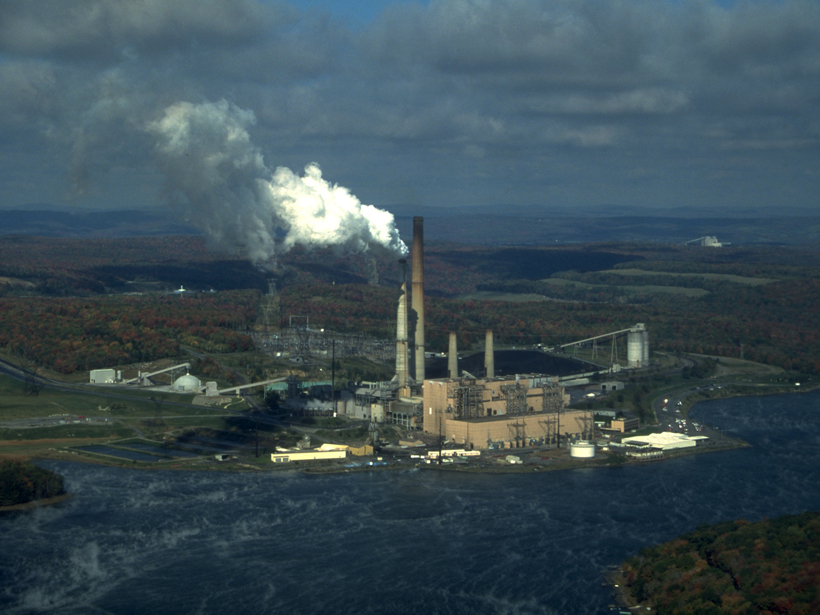In June, the U.S. Supreme Court blocked a rule from the Environmental Protection Agency (EPA) that aimed to limit mercury in power plant emissions. This rule, the Mercury and Air Toxics Standards (MATS), was the second major mercury pollution control in less than a decade to be overturned in a federal court. But a new study in Environmental Science and Technology reveals a paradoxical trend: national mercury emissions are dropping, and that drop is detectable even at the local level.
An Environmental Threat
According to the EPA, coal-burning power plants are responsible for about half the mercury released into the atmosphere. From there, it doesn’t take long for the toxic metal to find its way into the food chain.
“The atmosphere is the input for mercury into the ecosystem,” said John Sherwell, an author of the study and an atmospheric scientist at the Maryland Department of Natural Resources in Annapolis. “And ultimately into fish tissue, which is the health risk to humans.”
Maryland is home to a vital seafood industry, but it’s also close to some of the country’s greatest mercury emitters. So in 2006, Sherwell and coauthor Mark Castro of the University of Maryland Center for Environmental Science in Frostburg decided to begin tracking emissions.
They chose as their observation site an air monitoring station on the western tip of Maryland, wedged between West Virginia and Pennsylvania and not far from Ohio. In 2010, those three nearby states ranked among the top 10 mercury emitters in the United States, according to a 2011 report by Environment America Research and Policy Center based on EPA data. The report also found that those states produced one sixth of all the power plant mercury in the country.
The Threat Quantified
“I’m scratching my head and wondering, what the heck is going on?”
Castro and Sherwell used a system of calibrated air filters to measure three different mercury compounds in the air that flowed past the monitoring station. Almost immediately, they began noticing regular spikes in mercury levels. But over time, said Castro, the spikes became less frequent and less pronounced. “I’m scratching my head and wondering, what the heck is going on?” He added, “It wasn’t anything we were doing wrong; it was just because of lower emissions from the upwind states.”
From 2006 to 2014, he and Sherwell observed drops in all three mercury compounds they tracked, some by as much as 75%. That trend is backed up nationally: according to data reported by energy producers and compiled by the EPA, U.S. power plant mercury emissions dropped by 48% from 2005 to 2011. As far as the researchers know, theirs is the first study to confirm that these trends are detectable locally.
Castro and Sherwell attribute the downswing in mercury to the success of other air pollution controls.
“It’s a very instructive study,” said Charles Driscoll, an environmental scientist at Syracuse University in Syracuse, N.Y., who was not involved in the study. He noted that Sherwell and Castro’s instruments are “downwind of some very strong sources, so they can very clearly document what’s happening.”
Castro and Sherwell attribute the downswing in mercury to the success of other air pollution controls. For instance, the technology that reduces sulfur dioxide emissions, mandated by the 2005 Clean Air Interstate Rule, also cuts mercury. Rules limiting nitrogen oxides produce the same cobenefit. Plus, many coal-burning power plants have been shuttered as the energy industry has moved toward cleaner-burning natural gas.
The Path Forward
Soon, said Castro, he hopes to compare their data with atmospheric measurements from other sites around the country. In the longer term, Sherwell plans to study the responses of waterways and ecosystems to dwindling mercury in the atmosphere.
“In the end, the reason we’re all so concerned about it is that mercury is ending up in fish tissue,” he said. “So that’s kind of the long look.”
Meanwhile, the MATS rule isn’t dead: the Supreme Court ruled only that the EPA needed to conduct a more comprehensive cost-benefit analysis before it could enforce the regulation. In an email reply to Eos, a spokesperson for the EPA argued that many power plants are already making the changes necessary to be MATS compliant.
—Kerry Klein, Freelance Science Journalist; email: [email protected]
Citation: Klein, K. (2015), Despite stalled regulations, U.S. mercury emissions decline, Eos, 96, doi:10.1029/2015EO041205. Published on 9 December 2015.
Text © 2015. The authors. CC BY-NC 3.0
Except where otherwise noted, images are subject to copyright. Any reuse without express permission from the copyright owner is prohibited.

